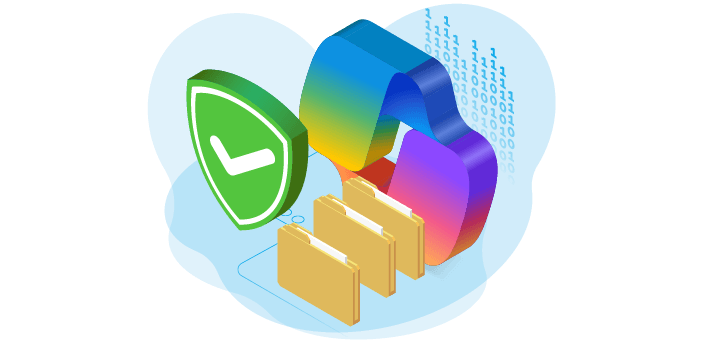Microsoft Copilot is an astonishing innovation. In mere months, it has reshaped how people interact with the Microsoft 365 ecosystem - automating emails, summarizing meetings, drafting reports, and surfacing insights with conversational ease. But as usage soars, many organizations assume that governance is part of the package. It is not.
While Microsoft has made clear commitments to Responsible AI, there is still a wide gap between their internal safeguards and the tools they provide to customers. The result is a growing governance vacuum - especially for those deploying Copilot at scale. Enterprises that delay building their own governance frameworks are left exposed to compliance violations, unauthorized use, and unpredictable outcomes, to name a few.

The message is clear. You can adopt Microsoft Copilot now. But if you want to govern it properly, you cannot wait for Microsoft to do it for you.
Beyond Branding: Copilot Is a Distributed Mesh of Capabilities
One of the reasons the governance challenge is underestimated is because “Copilot” is treated as a product. But it is not a single service - it is a distributed network of AI agents and integrations embedded across Microsoft 365.
There is Copilot in office apps such as Word, Excel, and Outlook. Copilot also integrates across Teams and Power Platform. There is Copilot Studio, where business users can create their own custom agents with external data connectors. SharePoint Premium features agents running on document metadata. Semantic memory is powered by Loop and Graph – and then there are ChatGPT-like interfaces that are layered into organizational knowledge bases. Each of these components has:
- Different permissions models
- Varying data access patterns
- Disparate logging and audit capabilities
- Little to no shared oversight
This diversity makes comprehensive governance difficult - and it is precisely why centralized control is urgently needed.
What Microsoft Provides - and Where It Falls Short
With the recently announced Copilot Control System, Microsoft is actively addressing enterprise concerns around AI visibility and control. The Control System introduces Copilot Lab, where users can review their prompts and feedback; Copilot analytics, which offer usage tracking across apps; permission management to restrict access to Copilot capabilities; and integration with DLP, sensitivity labels, and audit logs.
This marks a critical first step in operationalizing governance within Microsoft 365’s AI ecosystem.
However, while the Copilot Control System introduces much-needed transparency, it still falls short of delivering true enterprise-grade governance.
The system lacks a centralized inventory of all agents, particularly for Copilot Studio, declarative agents, Power Automate-driven copilots, and SharePoint Premium agents.
Feedback governance remains user-initiated rather than governed by policy or automation, and admins have limited control over prompt behavior beyond access restrictions.
In other words, Microsoft has delivered the visibility foundation, but the policy orchestration layer is still missing. For enterprises looking to deploy Copilot at scale, especially those with regulatory obligations or large federated environments, external governance solutions remain essential to provide automated lifecycle control, behavioral oversight, and cross-platform policy enforcement.

Lessons from the Field: What Customers Are Facing Today
In working with large enterprises, we have seen the consequences of this governance lag first-hand. In one financial services organization, Copilot surfaced internal audit documents in a Teams chat without violating any technical boundary - because permissions were technically allowed. In another case, a Copilot Studio agent was designed to answer employee HR questions but accidentally exposed sensitive investigation summaries due to poor prompt design.
In nearly all of these cases, the AI did what it was told. The problem was not the logic - it was the lack of oversight. Enterprise security and compliance teams have made it clear: they need transparency, control, and accountability. And right now, those are not available out of the box.
Building a Governance Framework That Fits Your Risk Profile
With the recently announced Copilot Control System, Microsoft is actively addressing enterprise concerns around AI visibility and control. The Control System introduces Copilot Lab, where users can review their prompts and feedback; Copilot analytics, which offer usage tracking across apps; permission management to restrict access to Copilot capabilities; and integration with DLP, sensitivity labels, and audit logs.
This marks a critical first step in operationalizing governance within Microsoft 365’s AI ecosystem.
Article content
However, while the Copilot Control System introduces much-needed transparency, it still falls short of delivering true enterprise-grade governance.
The system lacks a centralized inventory of all agents, particularly for Copilot Studio, declarative agents, Power Automate-driven copilots, and SharePoint Premium agents.
Feedback governance remains user-initiated rather than governed by policy or automation, and admins have limited control over prompt behavior beyond access restrictions.
In other words, Microsoft has delivered the visibility foundation, but the policy orchestration layer is still missing. For enterprises looking to deploy Copilot at scale, especially those with regulatory obligations or large federated environments, external governance solutions remain essential to provide automated lifecycle control, behavioral oversight, and cross-platform policy enforcement.
What that looks like in practice:
- Prompt logging and output inspection– Capture what users are asking Copilot and how it is responding, especially in regulated industries.
- Policy enforcement by role and sensitivity– Define who can use AI features and what data they can reach, based on classification.
- Custom agent inventory and risk scoring– Monitor what Copilot Studio agents exist, who created them, and how risky their access is.
- Approval flows for custom logic– Introduce governance steps before new AI-driven workflows can reach production.
- Incident response and rollback mechanisms– Define how to respond if Copilot exposes the wrong information or misinterprets intent.
These are not fringe capabilities. They are essential for responsible enterprise AI adoption.
Where Vendors Step In: The Rise of Neutral AI Governance Platforms
The scale of this challenge is driving demand for third-party platforms that sit between the enterprise and Microsoft’s ecosystem. These platforms do not replace Copilot - they augment it by offering visibility, control, and accountability where Microsoft has not yet delivered.
Think of it like privileged access management. Microsoft provides the tools. But third-party platforms make sure those tools are used correctly, within policy, and with full auditability.
In this emerging landscape, we are seeing platforms that can:
- Discover Copilot Studio agents and map their usage
- Block prompt types based on policy templates
- Link Copilot usage to data loss prevention and classification labels
- Route high-risk interactions for human review
- Provide a compliance-grade audit trail of AI decisions
These capabilities are not speculative. They are being piloted today by organizations who cannot afford to wait.
Final Thought: If You Adopt Fast, You Must Govern Even Faster
The governance challenges around Copilot are not Microsoft’s fault. They are a natural byproduct of rapid innovation.
But that does not mean you can delay solving them.
Microsoft will continue to enhance its tools, but the pace of Copilot adoption has already outstripped the pace of native governance features. If you want to stay in control of your enterprise data, behavior, and brand reputation, you need governance now - not in the next quarterly update.
You cannot wait for Microsoft. Because your Copilot is already live. If you want to find out how Rencore can keep you efficient and secure in the age of AI, reach out to us today.




